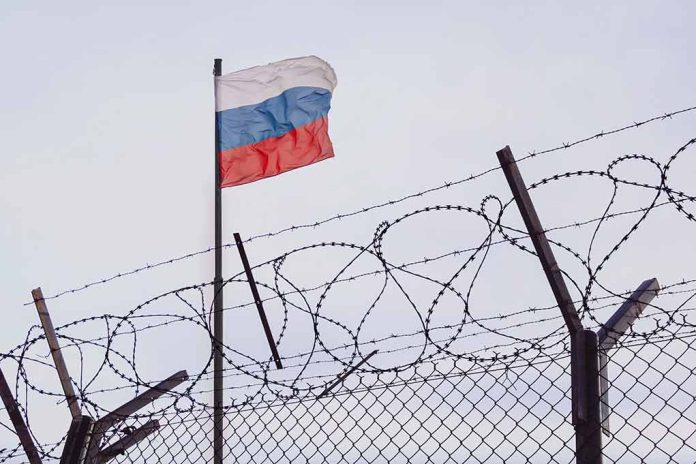
A groundbreaking agreement between Russia, the U.S., and Ukraine is set to protect vital energy infrastructure amid the ongoing Ukraine conflict.
Key Takeaways
- Russia and Ukraine reportedly halted targeting each other’s energy infrastructure on March 19.
- The U.S., Russia, and Ukraine have agreed to a 30-day ceasefire on energy infrastructure strikes.
- No formal comprehensive ceasefire has been agreed upon, highlighting skepticism about Russia’s commitment.
- The U.S. committed to enforcing the ban amid ongoing efforts to broker broader peace.
- A presidential communication advisor claims Russia continues to attack Ukraine’s energy facilities.
Diplomatic Engagements Bear Fruit
The recent diplomatic discussions revealed a focused initiative between Russia and the U.S., resulting in a critical 30-day energy ceasefire, amid continual concern for the safety of energy infrastructures. Diplomatic channels have been bustling, underscoring significant efforts in averting potential disruptions in the energy sector. The ceasefire announcement, made by Defense Minister Rustem Umerov, aims to safeguard pipelines, power installations, and refineries.
Umerov emphasized that the ceasefire will include “electricity generation and transmission infrastructure,” as per Kremlin statements, reassuring a temporary reprieve to regional tensions. The diplomatic dialogues further reiterated the commitment by the U.S. to enforce the ban and find ways to implement this agreement.
Challenges Amidst Ceasefire Declarations
Despite the agreement, tensions remain, as skepticism persists regarding Russia’s allegiance to ceasefire terms. Recent reports bring attention to continued strikes on Ukrainian energy facilities, as detailed by Ukrainian presidential communication advisor Dmytro Lytvyn.
“The reality is that they are striking our energy facilities with bombs, attack drones, and unmanned aerial vehicles,” Lytvyn said.
This discrepancy highlights the fragile nature of the ceasefire and the potential for misinformation to exacerbate tensions further. While discussions are aimed at a more comprehensive resolution, Russia’s ongoing aerial assaults pose significant challenges.
Future Prospects and Global Implications
Amid ongoing negotiations, the U.S. remains pivotal in facilitating peace and infrastructure safety. The collaboration also aims to eliminate military uses of commercial vessels in the Black Sea, along with economic moves to aid Russia’s global market interactions.
The efforts demonstrate a cautious yet critical step in reducing conflict-related risks to European and global energy supplies. Whether these talks will lead to enduring peace and normalized discussions remains to be seen, yet they offer a glimmer of hope amid prolonged hostilities.





